 Growing hot and sweet pepper seedlings on your own at home requires time, space and certain knowledge about agricultural technology. Pepper is a capricious and demanding food, moisture, and heat culture.
Growing hot and sweet pepper seedlings on your own at home requires time, space and certain knowledge about agricultural technology. Pepper is a capricious and demanding food, moisture, and heat culture.
In the absence of close attention, seedlings cease to develop, vegetative processes stop, which affects the crop.
Content
How to start growing pepper seedlings at home
In January, you need to decide on varieties and hybrids that should be suitable for the local climate. Examining multi-colored packages of seeds in the store, pay attention to the ripening time. Varieties are divided into:
- early, giving a full crop in 80-100 days after emergence;
- mid-ripening, ripening after 115 days;
- late peppers, the crop of which begins to ripen 130 days after germination.
To grow crops in open ground on the territory of the Russian Federation, you need to purchase seeds related to early ripe and medium early varieties. Seeds of early peppers are needed to meet their needs during the summer, and medium-late varieties are required to get the crop in the fall for thermal processing and preservation.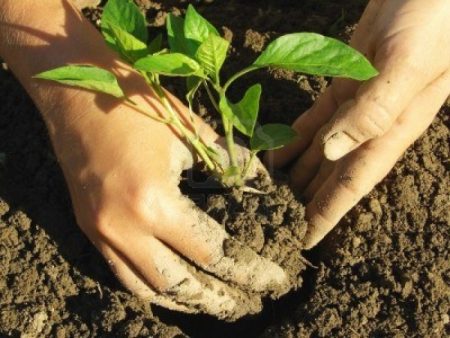
If peppers will be grown indoors, then medium-late indeterminant hybrids with a ripening period of up to 125 days are chosen for planting in the greenhouse. They constantly increase the crown, in which at the same time you can see the flowers and fruits.
Having decided on the maturity, pay attention to the form. The fruits of sweet pepper are diverse. They may be:
- elongated, and outwardly resemble large pods of hot pepper;
- conical, with a wall thickness of at least 5 mm;
- spherical, thin-walled, small size;
- cylindrical or cuboid, with different taste and wall thickness.
The surface of the pepper can have smooth lines, or be tuberous, with many hollows, soft creases and folds.
It is necessary to pay attention to the color of pepper, which he has in technical and biological maturity. Color in technical ripeness can be pale yellow, light green and dark green. Light peppers have thin walls, they are often used for stuffing. They have a pleasant sour taste, small size, which is convenient when preparing portioned dishes.
Dark green peppers are distinguished by thick walls, they have a pronounced taste, but in technical ripeness the pulp still does not have time to accumulate sugars, which worsens the characteristics of this variety of paprika in green form.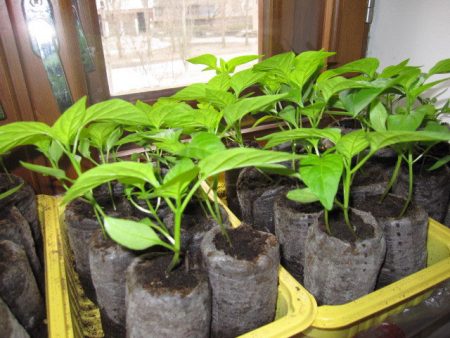
Dark green peppers have an advantage over light fruits:
- They are well-ripened after cleaning, maintaining smooth, juicy walls, while light-colored peppers quickly lose moisture and wrinkle at low humidity.
- After ripening, dark green fruits acquire a bright saturated shade of red or yellow.
- They have excellent taste.
- Resistant to fungal infections and bacterial rot.
- They can be transported over long distances.
- Harvested crops are stored for about 2 months.
The last thing you need to pay attention to is the height of the bush. It can range from 40 to 170 cm.Low-growing determinant bushes are planted in open ground. They form several brushes and end the growing season, devoting all their strength to the cultivation of fruit that has set in motion.
High indeterminate type bushes are plants in which the vegetative period will continue until the bush dies due to lower temperatures or infections. Such bushes are planted in closed ground to ensure long-term fruiting. If they are planted in the beds, then most of the fruits will die due to the first autumn frost.
Sowing rules
To seedlings feel good, you must follow the rules for their cultivation, recommended by agronomists. It is important for pepper to create optimal conditions for growth. He needs a nutritious soil with a normal level of acidity, enriched with potassium and nitrogen. Sprouts at the beginning of the growing season need:
If all these parameters are normal, the seedlings will please with their vigorous growth. If one of the requirements is violated, the pepper stops its vegetation and freezes in anticipation of a better life.
Sowing dates
Carefully reading the manufacturer's recommendations given on a bag of seeds, choose the time before sowing. Theoretically, pepper should be sown on seedlings 2 months before it is planted in open ground. Since pepper is a heat-loving culture, seedlings are planted at the end of 1 week of June. Therefore, sowing seeds in early March should fully satisfy this requirement.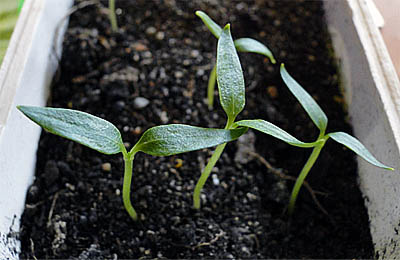
Many vegetable growers sow seeds earlier, so that in March there was time to sow those varieties that did not sprout. Pepper can be overexposed in seedlings. It grows well at a distance of more than 3 cm from each other. In the first 2-3 months, he builds up his root system, and if the pots are selected correctly in height, then the seedlings can be in them for up to 4 months, starting from seedlings. The main condition is a suitable place to grow. It should be:
- lit;
- closed from drafts;
- with an average daily temperature of at least 22 ° C;
- humidity not less than 60%.
Cooking seeds
Many vegetable growers sow dry seeds in deep containers, abundantly watered the soil with hot water, cover the plantings with several layers of film and wait for seedlings to appear. This approach is not always justified. Dry seeds can be sown in the soil if: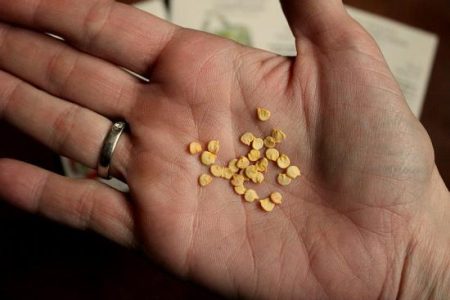
- they were purchased from trusted manufacturers;
- the seeds have undergone antibacterial treatment;
- sowing occurs in the early stages;
- there is an opportunity to dive seedlings after its emergence.
Professionals do not recommend practicing this method, because it gives unexpected results and it is impossible to predict a crop with such a sowing of seeds. This method has the following disadvantages:
- you never know whether shoots will appear;
- the seeds wake up and germinate very slowly, up to 3 weeks;
- with thick shoots, thin out shoots and dive seedlings;
- There are always poorly developing plants that need to be discarded.
With proper agricultural technology, which guarantees a high yield, you need:
- treat seed in antiseptic and fungicide;
- increase the degree of resistance to climatic conditions of growth;
- increase growth energy;
- check for germination;
- make highly nutritious soil;
- sow several seeds in tall pots.
Only then the sown seeds will give friendly shoots, and adult bushes will have equal opportunities for fruiting.
How to prepare the seeds
First you need to calibrate the seeds.To do this, they are laid out on paper and very small or too large seeds are removed, preferring medium-sized specimens.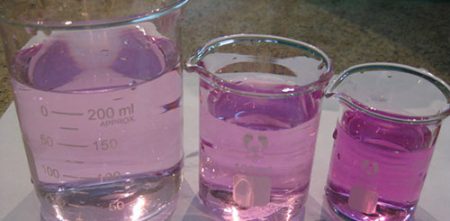
Then the calibrated seeds are poured with salt water to select the full seed from the soothers.
To obtain a solution in 1 liter of water dissolve 3 tbsp. l salt and dip pepper seeds into the resulting solution.
After 10 minutes, everything that was upstairs is cleaned, and all the sunken seeds are used for sowing.
To prevent fungal or bacterial infections, it is recommended to hold the seeds in a solution of Fitosporin, prepared according to the manufacturer's recommendations, the data on the package. In addition to Fitosporin, a complex fertilizer based on trace elements is added to the water. It is proved that pre-sowing treatment carried out in this way increases the yield by 30%.
After carrying out maintenance work, the seeds are sent for hardening. Wet pepper seeds are placed for 3 days in the refrigerator, where they lie on the top shelf. At this time, biochemical processes occur in them that make the cells less sensitive to temperature changes. Seedlings obtained from such seeds will be much easier to adapt to weather conditions.
After the hardening procedure, the seeds need to be germinated. They are placed in the center of a cotton shred, covered with an envelope, laid in a container, filled with hot water having a temperature of not more than 60 ° C so that the fabric is wet. A container with seeds is placed in a warm place where the temperature does not drop below 20C.
Within 10 days, the seeds germinate.
Important: It is necessary to ensure that the tissue does not dry out, otherwise the roots will dry out due to lack of moisture and the seed stock will die.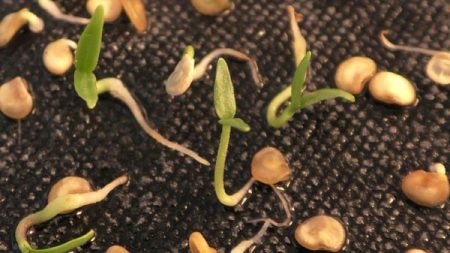
Getting ready for sowing
In order for pepper seedlings to fully develop, she needs nutritious soil. You can prepare the earth yourself by mixing in equal shares:
- wood ash;
- river sand;
- leaf humus;
- turf land.
Superphosphate 1 tsp per 1 l of soil is added to the resulting mixture. It can be replaced with a complex fertilizer for growing seedlings at the doses indicated by the manufacturer.
Many people who buy overgrown pepper seedlings growing in tiny cups on the market often see a sluggish vegetative process with no ovaries after planting the pepper in the open ground. This is due to the fact that the plant had to drive out a long stem due to a lack of lighting and an excess of nitrogen. Its root system was depressed at this time due to insufficient space, and all this led to the closure of growth points.
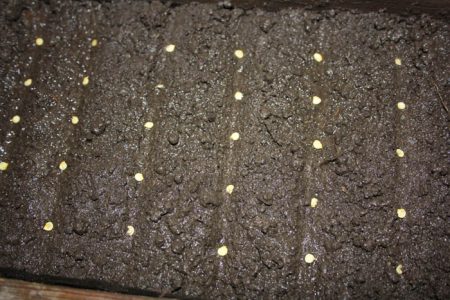
An ideal option for a container for growing pepper seedlings can be:
- disposable 0.5 liter plastic glasses;
- cropped plastic bottles;
- containers for vegetables from the old refrigerator;
- plastic boxes for storing vegetables;
- children's buckets.
The deeper the selected capacity is, the longer the root system will grow. It depends on how well the plant will tolerate the transplant and how quickly it starts to tie fruit.
Selected containers must be clean and dry. If plants have already been planted in them, the pot should be washed in a disinfectant solution, wiped dry and left on the street for a day.
Before filling the nutrient soil, several drainage holes should be made in the bottom with a nail or an awl.
Sowing seeds
The soil is densely packed into the finished containers, leaving up to 30 mm of free space to the edge. In a filled cup, with a diameter of 9 mm, a little hot water is poured to moisten the soil.Then make 3 pits with a pencil, 2 cm deep, put a seed in them, cover them with peat or sand.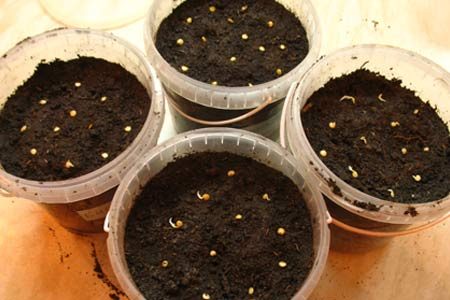
You can compact the soil, put in the center at a distance of 3 cm 4 germinated seeds, and fill the top with fertile soil with a height of at least 2 cm.
Sowing seeds can be carried out in peat tablets, which should be laid out on a tray and pour them with water. When the seedlings grow and the roots need more space, peat tablets are planted in pots.
Seed containers are covered with a film and put in a warm place until the first shoots appear. When the seven-leaf leaves appear, the plants are transferred to the southern or western windows.
Proper care
Using sprouted seed stock allows seedlings to begin accelerated vegetative growth. It is important to monitor the condition of the soil. Water should not stagnate in cups. In waterlogged soil, the level of acidity is rapidly increasing, and plants from this significantly slow down their development. Seedlings need:
- ventilate;
- turn different sides to the sun;
- feed;
- loosen the soil;
- weed, removing poorly growing specimens.
In order for peppers to actively grow green mass, they need to be fed when 1 real leaf urea appears. The working solution is made at the rate of 1 tsp per 3 liters of water.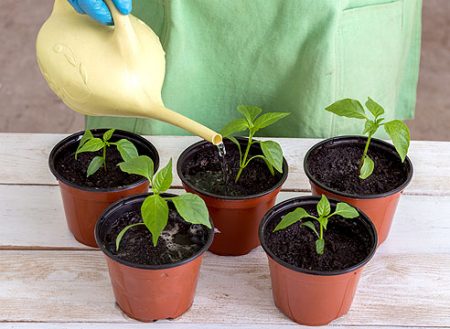
The second top dressing is carried out after 10 days with any fertilizer containing trace elements. The working solution is made following the manufacturer's recommendations.
Plants are watered with warm water, and after watering, the soil is loosened.
Important: If glass freezes on the window at night, it is recommended to cover the plantings with film or non-woven material. This speeds up the growth of seedlings.
Peppers should not be dived. If it so happened that the capacity for sowing seeds was chosen with low walls, and the root system in it will be oppressed, a pick should be done when the plants acquire 2 real leaves. Many gardeners pick in the appearance of cotyledons, which is also acceptable, but requires great care.
When the temperature in the street reaches 18C, the plants begin to take to the street in sunny, calm weather. The first 3 days of seedlings are put up on the east side of the house. There they get diffused sunlight and feel great. On day 4, the pots can be rearranged to the south.
In the sun, the soil in pots dries quickly. Watering seedlings exposed on the street, you need either until 12 days, or after 3 hours, when the sun's rays are no longer so aggressive.
You should not rush and leave young peppers overnight in a greenhouse. If there is a severe freeze, the plants will die. Peppers leave the night for shelter a week before transplanting, covering the seedlings at night with some material that retains heat.
Possible growing problems
The black leg often affects seedlings when the first true leaf appears. The stem near the base softens and darkens, and the plant, like a mowed tree, falls to the ground. The reason for this phenomenon is contaminated with an aggressive fungus soil. He constantly lives in any soil, but is activated in situations favorable for its reproduction. This is high humidity, low ambient temperature and lack of sunlight.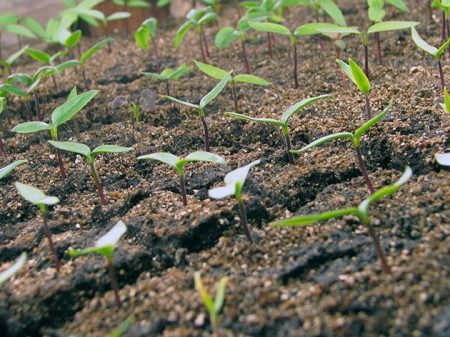
To prevent this disease, do-it-yourself soil should be warmed up until a haze appears. Before planting, it is recommended to shed the soil with a solution of Fitosporin or fungicide Skor. It uses diphenoconazole.
This is a systemic fungicide of the triazole class, which has a 3 hazard class. It is used for prophylactic and treating effects in fungal diseases. This fungicide is prohibited processing during flowering.
The fungus will not be able to hit the seedlings if:
- seeds were preplanted;
- the soil will be loose;
- watering is moderate and produced only with warm water;
- daily temperature drops have minimum values.
If the black leg mow single plants, you need to carry out preventive work. To do this, you should spill the plants with a warm solution of Fitosporin or potassium permanganate at the rate of 3 g per 10 liters of water.
White rot is caused by another fungus. It develops due to the same reasons as the black leg, but on older plants. A white fluffy coating appears on the main stem, which spreads up the plant.
To prevent the germination of spores of this fungus, seedlings should not be exposed under the open sky in cold cloudy weather. If rot has appeared, you need to process the planting with a solution that includes:
- 1 g of zinc sulfate;
- 2 g of copper sulfate;
- 10 g of urea.
To dissolve this mixture, you need 10 liters of warm water.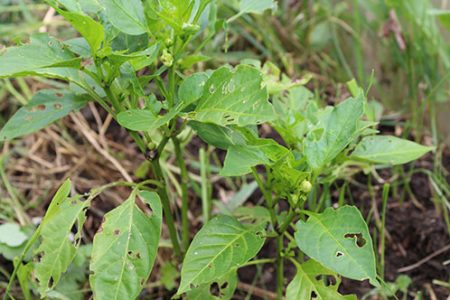
It is recommended to remove the affected seedlings by collecting 3 cm of the top layer of earth beneath it.
Gray rot affects the leaves of plants, ready for planting in open ground. It develops from an excess of moisture and cold. Appears in plants that grow in containers without drainage.
With its signs:
- with the help of an awl make drainage;
- reduce watering;
- loosen the soil;
- seedlings are sprayed with preparations containing copper.
For this, copper sulfate in a solution made at the rate of 2 g per 10 liters of water or HOM, prepared according to the instructions, is suitable.
Fusarium wilting of pepper can be observed on well-developed seedlings with the first buds. The disease develops with thickened plantings, insufficient watering, acidic soil, at temperatures above +28 0C.
Moisture and heat can cause black bacterial spotting. Favorable conditions for development will be a temperature of about 30 0C and moisture on the leaves.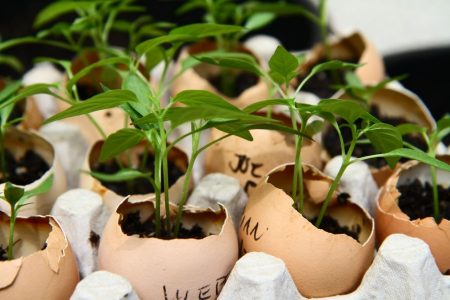
Seedlings can be chosen by aphids or spider mites. On pepper, they appear from contaminated soil, which they forgot to warm up. Aphids and mites are washed off with soapy water or treated with Intavir and similar preparations. Before use, you should study the instructions.
If the seedlings fade, and there are no traces of fungal lesions on it, then the following reasons are possible:
- damaged roots when loosening or picking;
- dense soil interferes with the access of oxygen;
- lack of nutrients or light;
- sudden changes in temperature.
To avoid damage to seedlings by fungi, you need to use a healthy soil and process the seeds. You should buy varieties of peppers, choosing for planting those that are resistant to disease.
Reviews
Many experienced gardeners find it easier to buy pepper seedlings in the bazaar because growing pepper seedlings requires a lot of attention. Buying seedlings does not always give the expected yield. Very often, overgrown peppers grown in containers close to it are sick for a long time and begin to tie crops by the end of the season.
Vegetable growers who risked growing seedlings on their window rejoice at the crops in their area.
Irina, Moscow Region: Pre-sowing seed treatment helps to avoid fungal infections that can infect seed. Soak the seeds for 10 minutes in a solution prepared from 3 ml of hydrogen peroxide and 100 ml of water, heated to +40 C. My peppers always stand in even rows, decorated with large fruits.
Olga, Krasnodar: I began to add a little vermiculite to the home soil. Peppers like him. With its presence in the soil, it is possible to maintain a stably moist state of the soil and increase oxygen access to the roots. Seedling for planting in open ground has at least 12 leaves and some already have flowers.
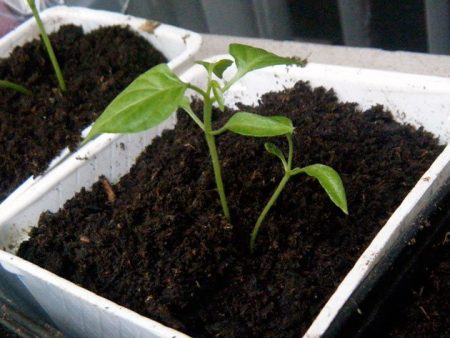
Svetlana, Amur Region: Pepper will grow much better if it is not dived, but grown in a deep container filled with nutrient soil. To get full seedlings, I carefully look after him.
Vera, North Caucasus: When 3-4 real leaflets appear near pepper seedlings, I transfer the seedlings to pots with a volume of 0.5-0.7 l by transfer. There she grows safely, waiting for landing on the beds.
Mikhail, Crimea: Pepper seedlings will grow perfectly without top dressing if planted in nutritious soil and provided with heat and lighting for at least 12 hours a day.

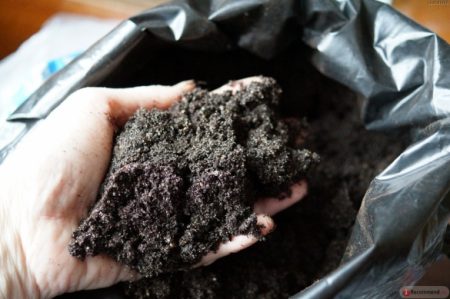



 Calorie pepper stuffed with meat and rice - BZHU per 100 grams
Calorie pepper stuffed with meat and rice - BZHU per 100 grams Gorky pepper - the best varieties for open ground
Gorky pepper - the best varieties for open ground Hot pepper seeds - the best varieties for open ground and reviews
Hot pepper seeds - the best varieties for open ground and reviews Capsicum tincture for hair - how to use and reviews
Capsicum tincture for hair - how to use and reviews
Andrey Nikiforov
Do you need a pick?
The main purpose of picking is shortening, pinching the main root is to make the plant develop the root system for a more complete nutrition. But they do not emphasize that the root system develops for the surface collection of moisture and nutrition.
Enemies of gardeners came up with my pick-up opinion. Proponents of picking know that even a slight drying of the surface layer leads to drooping leaves due to lack of water.
And who planted seeds in the ground or intact seedlings is not familiar with this problem. Seedlings planted in the ground without pinching after a couple of weeks stably tolerate a two-three-day break in irrigation. And later it easily tolerates watering once a week or two.
Of course, the groundwater level must be taken into account. If in doubt, then look on the internet for articles about the length of the roots of various vegetables. In a watermelon in the natural environment, the root takes twenty-five meters !!! In the desert regions no one watered it.
And supporters of the dive run all summer with water. And complain that the drought. And watered-weeds strangled and so on. Let the experimenters prove that the crop is bigger. For two or three kg ?? for all the flour? Are such efforts necessary? And is the harvest a joy?